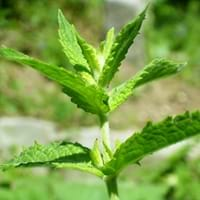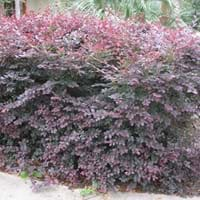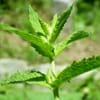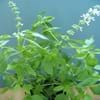Life Span
Perennial
Perennial
Type
Herbs
Broadleaf Evergreen
Origin
Europe, Mediterranean
China, Japan
Types
Not Available
Little Rose Dawn, Hines Purpleleaf, ‘Shang-hi
Habitat
Temperate Regions
gardens, Hillside, open Woodlands, Roadsides, Rocky areas, Stream side, Woodlands
USDA Hardiness Zone
3-7
6-9
AHS Heat Zone
7-1
Not Available
Sunset Zone
1a, 1b, 2a, 2b, 3a, 3b, 4, 5, 6, 7, 8, 9, 10, 11, 12, 13, 14, 15, 16, 17, 18, 19, 20, 21, 22, 23, 24
21,22
Habit
Spreading
Oval or Rounded
Flower Color
Pink, Lavender
White
Flower Color Modifier
Bicolor
Bicolor
Fruit Color
Not Available
Brown
Leaf Color in Spring
Green
Green, Bronze
Leaf Color in Summer
Green
Green
Leaf Color in Fall
Green
Green
Leaf Color in Winter
Light Green
Green
Leaf Shape
Oval with toothed margin
Ovate
Plant Season
Not Available
Spring, Summer, Fall, Winter
Sunlight
Full Sun, Partial Sun
Full Sun, Partial Sun, Partial shade
Growth Rate
Very Fast
Fast
Type of Soil
Clay, Loam, Sand
Loam
The pH of Soil
Acidic, Neutral, Alkaline
Acidic, Neutral
Soil Drainage
Well drained
Average
Bloom Time
Early Summer, Summer, Late Summer
Early Spring, Late Winter
Tolerances
Drought
Drought
Where to Plant?
Container, Ground
Container, Ground
How to Plant?
Seedlings, Stem Cutting
Seedlings, Transplanting
Plant Maintenance
Medium
Low
Watering Requirements
Average Water Needs, Do Not over Water
Do Not over Water
In Summer
Lots of watering
Lots of watering
In Spring
Moderate
Consistently
In Winter
Average Water
Ample Water
Soil pH
Acidic, Neutral, Alkaline
Acidic, Neutral
Soil Type
Clay, Loam, Sand
Loam
Soil Drainage Capacity
Well drained
Average
Sun Exposure
Full Sun, Partial Sun
Full Sun, Partial Sun, Partial shade
Pruning
Remove damaged leaves, Remove dead branches, Remove dead leaves
Prune to control growth
Fertilizers
All-Purpose Liquid Fertilizer
All-Purpose Liquid Fertilizer, Fertilize three times a year
Pests and Diseases
Aphids, Red blotch, Spider mites, Whiteflies
Bacterial Gall
Plant Tolerance
Drought
Drought
Flower Petal Number
Single
Single
Fragrant Bark/Stem
Yes
No
Foliage Texture
Medium
Medium
Foliage Sheen
Glossy
Matte
Attracts
Aphids, Flies, Mites
Not Available
Allergy
bullous cheilitis, contact allergic dermatitis
Not Available
Aesthetic Uses
Not Used For Aesthetic Purpose
Showy Purposes
Beauty Benefits
Not Available
Not Available
Environmental Uses
Air purification
Not Available
Medicinal Uses
Antifungal, Arthritis, Digestive disorders, Stomach pain
No Medicinal Use
Part of Plant Used
Leaves
Whole plant
Other Uses
Food for animals, Used as a nutritious food item, Used as insect repellent, Used for its medicinal properties, Used in making beverages
Used as Ornamental plant
Used As Indoor Plant
Yes
No
Used As Outdoor Plant
Yes
Yes
Garden Design
Container, Edible, Herb / Vegetable
Container, Feature Plant, Foundation, Hedges, Mixed Border, Screening, Wind Break
Botanical Name
MENTHA spicata
LOROPETALUM chinense
Common Name
Spearmint
Loropetalum, Chinese fringe flower
In Hindi
पहाड़ी पुदीना
Loropetalum
In German
Grüne Minze
Loropetalum
In French
menthe verte
Loropetalum
In Spanish
menta verde
Loropetalum
In Greek
δυόσμος
Loropetalum
In Portuguese
hortelã
Loropetalum
In Polish
mięta
Loropetalum
In Latin
Coriander
Loropetalum
Phylum
Magnoliophyta
Spermatophyta
Class
Magnoliopsida
Dicotyledonae
Order
Lamiales
Saxifragales
Family
Lamiaceae
Hamamelidaceae
Clade
Angiosperms, Asterids, Eudicots
Angiosperms, Core eudicots, Eudicots
Tribe
Mentheae
Not Available
Subfamily
Not Available
Not Available
Number of Species
Not Available
Not Available
Importance of Spearmint and Loropetalum Chinese
Want to have the most appropriate plant for your garden? You might want to know the importance of Spearmint and Loropetalum Chinese. Basically, these two plants vary in many aspects. Compare Spearmint and Loropetalum Chinese as they differ in many characteristics such as their life, care, benefits, facts, etc. Every gardener must at least have the slightest clue about the plants he wants to plant in his garden. Compare their benefits, which differ in many ways like facts and uses. The medicinal use of Spearmint is Antifungal, Arthritis, Digestive disorders and Stomach pain whereas of Loropetalum Chinese is No Medicinal Use. Spearmint has beauty benefits as follows: Not Available while Loropetalum Chinese has beauty benefits as follows: Not Available.
Compare Facts of Spearmint vs Loropetalum Chinese
How to choose the best garden plant for your garden depending upon its facts? Here garden plant comparison will help you to solve this query. Compare the facts of Spearmint vs Loropetalum Chinese and know which one to choose. As garden plants have benefits and other uses, allergy is also a major drawback of plants for some people. Allergic reactions of Spearmint are bullous cheilitis and contact allergic dermatitis whereas of Loropetalum Chinese have Not Available respectively. Having a fruit bearing plant in your garden can be a plus point of your garden. Spearmint has no showy fruits and Loropetalum Chinese has no showy fruits. Also Spearmint is not flowering and Loropetalum Chinese is not flowering . You can compare Spearmint and Loropetalum Chinese facts and facts of other plants too.





